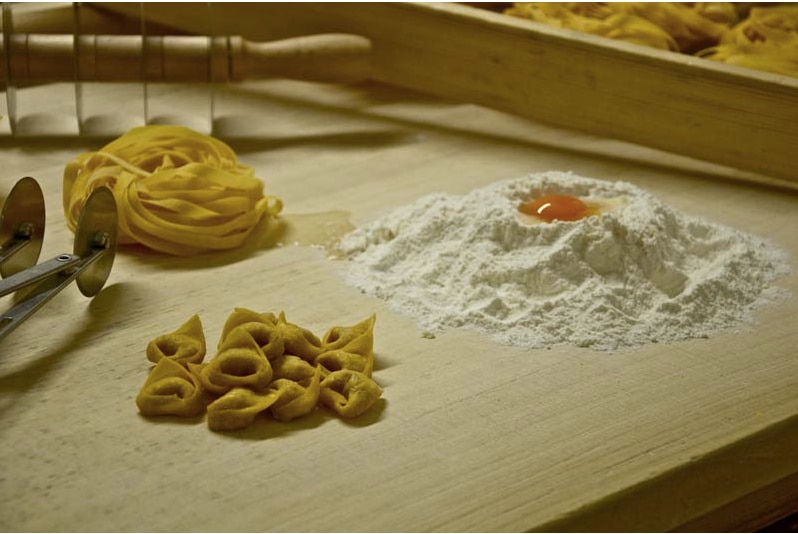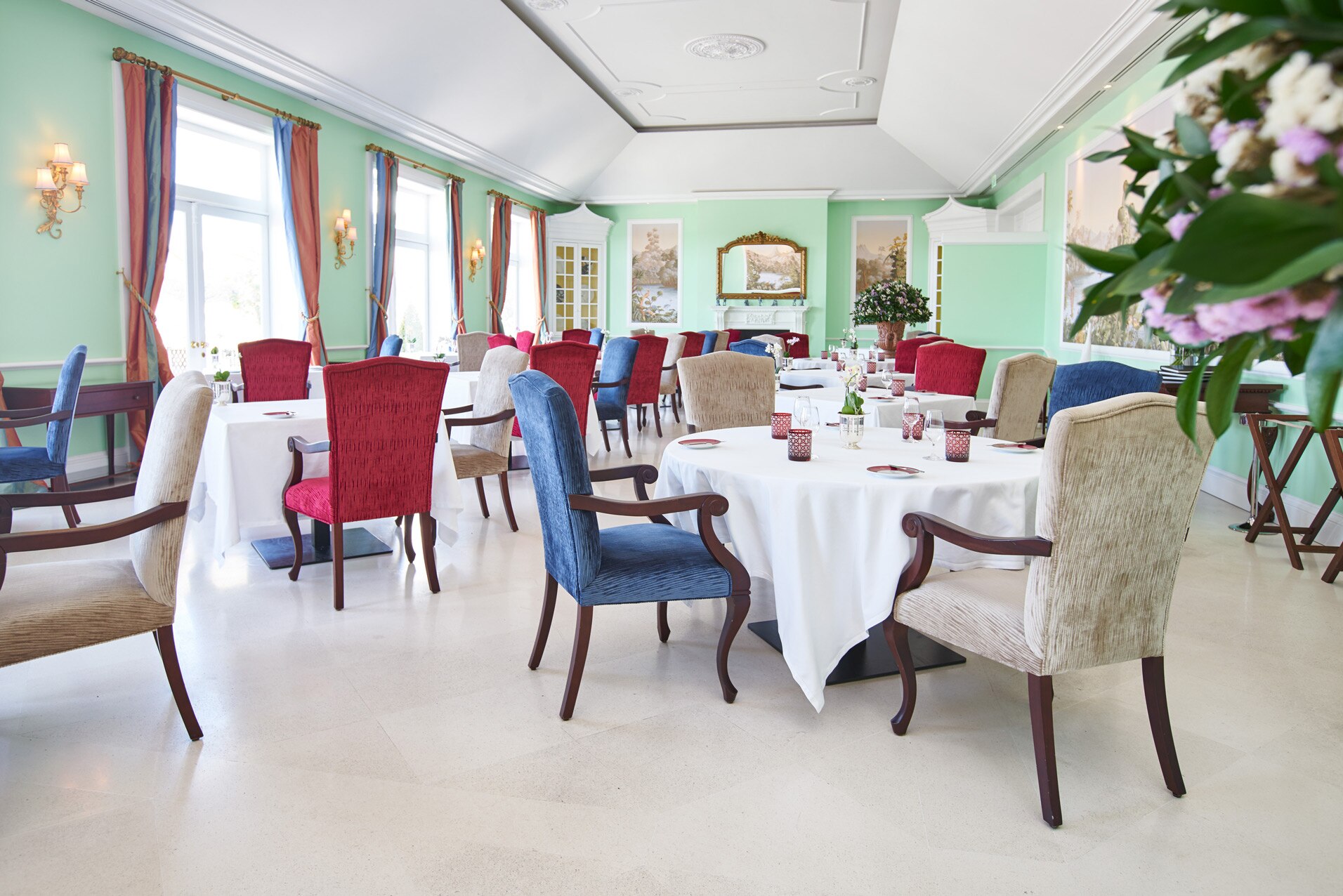No One You Know Is Visiting These 7 Underrated Foodie Cities in Europe (And That’s Why You Should Go)
London, Paris, and Rome better look out behind.

Europe is a food-lover’s paradise. Many of the world’s great culinary traditions spring from its capitals, which include Paris, Rome, and Madrid. And while you’d be hard pressed to find a bad meal in those cities, and many others dotted around the continent, it is in Europe’s less-trafficked towns where some of the best food can truly be found.
So even if your next trip to the Old World includes stops in its well-worn destinations, take a side trip (or two) to check out these luscious locales and discover something new.
1. Bologna, Italy

Bologna is the capital of one of Italy’s most famous food regions, Emilia-Romagna, and though most tourists tend to skip it on the way between Florence and Venice, it is well worth a detour. Set in an old building with 400-year-old frescoes on the wall, the candlelit Le Stanze del Tenente is perfect for a quiet drink. Ristorante Diana prides itself on serving only the most authentic Bolognese dishes, such as tortellini in a hearty meat brodo and oven-baked green lasagna. Head to Osteria dell’Orsa to make new friends at the communal tables over a meal of turkey cotoletta heaped with bacon and cheese, and a glass or two of frosty, sparkling red Lambrusco to wash it down. For a taste of history, though, a visit to Pappagallo is in order. The family-owned restaurant has been around since 1919 and is a veritable institution in Bologna set in a 14th-century building between two of the city’s landmark leaning towers.
2. Bordeaux, France
It stands to reason that a city in the heart of one of the world’s great wine regions would have some of the world’s greatest cuisine, and yet Bordeaux is often overlooked in favor of Paris and Lyon. That just means a meal out here comes at a much more moderate price tag than in some of France’s other cities, though. Fine dining here is a more laid back affair at brasserie-style eateries like Le Bouchon Bordelais, where specialties include roasted Gascon pork chop with summer truffles and Noimoutier roasted potatoes; and Arcachon oysters with Aquitaine caviar and a mignonette of lemon and dill. If you do want to drop a bundle on an unforgettable meal, the Michelin two-star Le Pressoir d’Argent Gordon Ramsay at the Intercontinental Bordeaux Le Grand Hotel is one of the best choices in town with multi-course prix-fixe menus including the signature French lobster that’s finished off in the silver Christofle press that gives the restaurant its name. Just be sure to leave time to learn about the area’s wines and history (and have a drink with fabulous views) at the Cité du Vin museum.
3. Budapest, Hungary

Hungarian cuisine is about so much more than goulash and paprika — though those can be sensational, too — and the country’s capital is the perfect place to explore its burgeoning foodie scene. Spend an afternoon perusing the booths at the Great Market Hall. Sample traditional foodstuffs at the various stands on the second floor purveying everything from deep-fried lángos flatbread with sour cream and grated cheese, or cabbage stuffed with onions and ground pork. You can find a hipper version of this type of food court in a courtyard tucked away in the old Jewish quarter called Karaván (try the various sausages stuffed into pretzel-like cones and topped with fried onions at Kobe Sausages). Menza is a trendy, tongue-in-cheek take on the simple foods you could have found at roadside diners in the Soviet days, while those looking to splurge can head to the Michelin-starred Costes for show-stopping dishes like slow-cooked Hungarian trout with fondant potatoes, all served with suggested Hungarian wine pairings, of course.
4. Glasgow, Scotland

Who would have thought, even a decade ago, that Scotland would become an epicure’s delight? But this small northern land is home to a bounty of fresh produce and ingredients from its fertile shores and teeming waters, and chefs all over the country are putting them to good use in beautiful new restaurants. Although the food scene in Edinburgh tends to get quite a lot of press, there is plenty to explore in grittier Glasgow as well. Spend an evening at One Devonshire Gardens in the city’s tony, Victorian West End. After a dram or two of whisky from the hundreds-strong collection, feast on standout bites like the terrine of poached rabbit loin confit with golden raisin puree and celeriac remoulade; or succulent salmon with pumpkin risotto and a salsify beignet is a final taste of the country’s lochs. Just outside of town is one of the country’s newest luxury hotels, 18th-century Crossbasket Castle. The grand candlelit dining room there is an incomparable setting for enjoying Scottish delicicacies such as juicy Orkney scallops with celeriac purée, apple and Perigord truffle; or Highland venison loin, en-croûte shoulder, foie gras, sliced poached pear and bacon panna cotta.
5. Gothenburg, Sweden

Scenic Stockholm tends to get all the attention, but Sweden’s second-largest city is just a quick train ride away on the west coast, and is home to some of the country’s best restaurants. Foraged, seasonal ingredients and natural wines are the order of the day at rustic-chic Natur, while the bustling open kitchen at SK Mat & Manniskor provides dinner and a show. Order the unbelievably tender arctic char baked with hazelnuts, elderflower, soured and baked celeriac and a white wine foam sauce for something truly special. You might be tempted to order the seven-course prix-fixe at Köka, but the five-course still has standout dishes such as langoustines with crushed hazelnut and quince puree, and a dish of smoky wild mushrooms, pickled fir tree sprouts, and fresh lettuces that tastes like a bite of forest. There are simpler pleasures to be had, too, such as handmade espresso drinks (and cardamom rolls) at da Matteo, or traditional shrimp skagen on toast from one of the restaurants at the Gothic-style “Fish Church” seafood market.
6. Porto, Portugal

Though Lisbon’s dining scene has drawn glitterati to the country’s capital, Portugal’s true foodie heartland lies to the north at the mouth of the Douro River valley and its famous terraced hillside vineyards. Due to the geography, seafood and fine wines are the order of the day, though you will likely also encounter sausages and other mouthwatering meats made from the mountainous Transmontana region’s famous pata negra pork. The menu at Cantina 32 feels both traditional and international, while Porto-born celebrity chef Rui Paula’s DOP is one of the city’s most sought-after reservations. The maestro’s so-called “kitchen of memories” lovingly turns out plates like local scallops with cauliflower and crayfish reduction; scarlet Atlantic shrimp with mango and passion fruit, and octopus carpaccio with pomegranate and slices of tuna crudo.
One of the city’s top fine-dining experiences, though, has to be at a luxurious hotel called The Yeatman. The Relais & Chateaux member is owned by the famous Port house Taylor Fladgate and is perched on a hillside overlooking the old town from the historic Vila Nova de Gaia neighborhood where many of the ancient Port aging "lodges" are still to be found today. The hotel’s colorful nouveau-Baroque Michelin two-star restaurant serves up constantly changing tasting menus of both regional and national specialties. Depending on when you visit, you might find dishes like suckling pig fritters with apple-orange puree, Algarve prawns with lime foam and carrot-beet puree, and John Dory with crayfish, lobster, and sea grass on offer.
7. Tallinn, Estonia

It was restaurants like Noma in Copenhagen and Oaxen Krog in Sweden that put new Nordic cuisine on the map a decade ago. But these days, young Estonian chefs are making their own mark on the map with inventive dishes and beautiful new restaurants. All you need to do is venture beyond the warren of medieval streets usually thronged by cruisegoers to find them. Among the top restaurants in town to sample new takes on seasonal Estonian specialties is Leib, which means black bread in Estonian. The menu includes hearty dishes like pan-fried pike perch with cauliflower cream, marinated onions, chive oil, and wildflowers; and baked chocolate ganache with rowan-honey sauce and meringue, which you can wash down with artisanal blackcurrant schnapps. At Restoran Ö, chefs Ranno Paukson and Martin Meikas draw from the ingredients of their native Saaremaa Island to create delectable dishes such as elk carpaccio with black garlic, lichen, smoked egg yolk, and beet powder; and cured trout with roe, smoked sour cream, dill oil, and organic buckwheat crisps.




